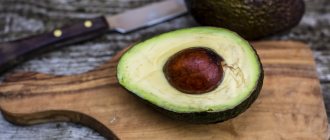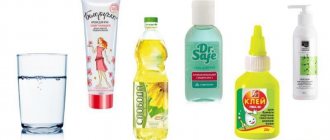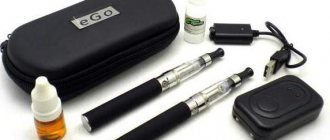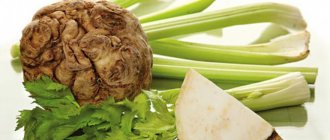How, and, most importantly, where to store honey correctly
In order for honey not to lose its positive qualities even after many years, you need to understand and comply with certain storage conditions, which include:
- Where exactly to store honey
- How long can honey be stored before it begins to lose its properties?
- At what temperature should this product be stored?
As mentioned earlier, certain conditions must be observed to store honey. The most important condition that any product will not tolerate is direct exposure to sunlight. Since sunlight can heat the objects it illuminates, it will, without any difficulty, quickly heat the jar or other container in which your honey is stored, which can instantly destroy most of the beneficial substances it contains.
That is why honey can be stored in dark places, such as:
- Dark room without windows
- Underground cellar
- Basement of the house
The above is just a small list of places where honey will “feel comfortable”
Also, you need to take into account the humidity level of the room in which you are going to store the product. Also, as you know, there are many varieties of this wonderful delicacy.
Thus, linden and rapeseed sweet amber practically do not differ from each other in terms of storage conditions in which they can be left.
But, for example, honey with beebread needs to be stored a little differently, however, the basic conditions do not change too much. To keep such a product as long as possible, you can place it in a cool room, which naturally does not receive sunlight. The humidity level of this room should be at least 15-20 percent.
We will talk about the temperature at which honey can be stored without fear of losing its properties later.
Storage methods
In a refrigerator
Opened champignons without special packaging can be kept in the refrigerator on the middle shelf for up to 3 days. In this case, the temperature must be maintained within the range from 0 to +2 °C. Longer storage in the open air leads to the fact that champignons lose most of their moisture, their surface darkens, and they become tasteless.
If you put pre-prepared, peeled mushrooms in plastic containers or a plastic bag, they will retain their properties for a week. At the same time, it is important to periodically provide oxygen access to the packaging, otherwise the accumulated condensate will cause spoilage and rotting of the product.
You can also do this: place the mushrooms in a compartment for storing vegetables in one layer. They will need to be covered with a cotton cloth or paper towel on top. This way they can stay fresh for up to 5 days.
In the freezer
If you freeze champignons, their shelf life will increase significantly. Before storing mushrooms for freezing, they are first cleaned (as described above). Then they are laid out in hermetically sealed containers or bags that are tied tightly. Store mushrooms in the general compartment at a temperature of -18°C for 1 month. Champignons cannot be re-frozen, so they are divided into portions, each of which will need to be consumed at a time.
Note: it will be easier and faster to select mushrooms for cooking if you sort them by size. Small champignons can be frozen whole, large ones can be cut into pieces.
In room
If you don’t have time to process all the raw materials at once, use this option. But remember that this is a short-term storage method - no more than 12 hours. They do this: carefully place the mushrooms in an enamel basin or plastic bucket. Place the filled container in a cold place, such as a cellar, basement or bathroom.
Interesting: At what temperature can laminate be stored in packaging?
How to store it correctly
Lovers and connoisseurs of the sweet natural bee product need to know how to properly store honey. But of course! Bee honey, too, along with other products, requires certain storage. The quality of this valuable product, and therefore its healing properties, largely depends on the proper storage of honey.
Temperature and humidity
We discussed earlier what kind of container to store honey in, so we will not consider this issue here. First, let's look at storage conditions such as temperature and humidity. The honey storage temperature recommended by many books and reference books on beekeeping is +10°C and air humidity 60%.
According to GOST 19792-2001 (Natural honey. Technical conditions), honey with a moisture content of 19% should be stored at a temperature not exceeding +20°C, and honey with a mass fraction of water of 19-21% at a temperature from +4°C to +10°C (Such temperatures only happen in a cellar or basement). This GOST does not specify how to store honey with a moisture content of 15-18%.
According to the newest GOST for honey (GOST R 54644-2011), the storage conditions for honey have changed somewhat: now the honey storage temperature is no higher than +20°C (nothing is said about humidity at all).
Attention!
Not everyone has the above conditions in their apartment. Especially in the kitchen, where many people store “heavenly dew juice”, in the sense of bee honey
We ourselves store a jar of honey in the kitchen under the sink (next to the potatoes), where the temperature is +25°C, of course I didn’t measure the humidity. Honey for sale (in hermetically sealed glass jars) is stored on the bottom shelf in the closet, where the temperature is the same.
I noticed that if you store bee honey at lower temperatures (under the window or in the refrigerator), it crystallizes faster and becomes hard, and when drinking tea it is not very convenient to take it from the honeypot with a spoon.
In a dry room (with low humidity), a process called honey blossoming may occur (this fact indicates the high quality of honey). At high humidity fermentation of honey may occur. To be honest, I have never even seen how honey ferments.
Smells, darkness and honey
Smells, darkness and honey You should not store honey in a room (on shelves, racks) with products that have strong odors, as honey can absorb them and lose its taste.
However, if you store honey in a tightly closed jar, then nothing bad should happen.
The first rule is that the place for storing honey should be dark or shaded. When exposed to sunlight, the product very quickly loses all its healing properties, since under the influence of intense light the healthy product turns into a mass of carbohydrates, and valuable components and enzymes are simply destroyed.
Therefore, honey cannot be stored on the windowsill or dining table. Many people prefer to store this product in the general compartment of the refrigerator. This is permissible, but only if certain honey storage conditions are met: the temperature should not be below +5°C; For storage it is better to prefer a compartment on the door;
What you really need to remember is that you need to store honey in a dark place.
Advice!
Back in the last century, German scientists proved that natural honey left on a window (in normal daylight) for two days will lose its medicinal properties.
It turns out that you should not store a jar of honey on a windowsill or on an open shelf.
The second rule is optimal air humidity, which can range from 60% to 80%. If the room is too damp, the honey will quickly absorb moisture and oversaturation with it will lead to rapid souring of the product. Here you don’t even need to mention that honey will immediately lose its value.
Honey perfectly absorbs moisture from the environment. If you do not close a jar of honey tightly and leave it near a damp place, the mass fraction of water in the product will increase and, as a result, the amount of useful substances will decrease.
In addition to moisture, honey perfectly absorbs odors, so it should not be stored next to strong-smelling foods (fish, onions, vinegar, sweet carbonated drinks, etc.), as well as household chemicals.
Another thing is that there may be a danger for storing honey when you buy honey that is not quite ripe, and the moisture content there is higher than intended.
This honey will not be stored for long; it will sit for a while and may ferment. This may be an indication that the honey was not quite ripe.
Humidity and odors
Honey perfectly absorbs moisture from the environment. If you do not close a jar of honey tightly and leave it near a damp place, the mass fraction of water in the product will increase and, as a result, the amount of useful substances will decrease. In addition to moisture, honey perfectly absorbs odors, so it should not be stored next to strong-smelling foods (fish, onions, vinegar, sweet carbonated drinks, etc.), as well as household chemicals.
Important to remember! Margarita Bukina, board member of the Moscow Beekeepers Society:
“If honey has been stored correctly, it can be used for more than two years, although the healing properties of this product decrease with each subsequent year. To this day, ancient honey is found in Egyptian tombs, which is suitable for consumption. But if any of the rules are violated (the packaging was not tightly closed, heated, exposed to sunlight, etc.), honey can be stored for no more than eight months.”
Article tags
absolute, quince juice, anti-pigment, first aid kit, watermelon juice, aroma, aromatherapy, aphrodisiac, base, base oil, balm, without solarium, hawthorn, buns, broth, grapes, cherry, water, hair, wax, hair loss, baking, flu, children, diet, yeast, melon, woman, animals, tan, health, toothache, toothpaste, immunity, yoga, cupcake, dogwood juice, skin, goat milk, conditioner, coffee, cream, chicken fillet, flax, makeup , mask, argan oil, massage, fur, sea salt, man, flour, meat, honey, runny nose, infusion, feet, education, vegetables, oats, mouthwash, nuts, fragrance, bran, body cleansing, liver cleansing, perfume, pigmentation , food, fir, gift, holiday, bee products, propolis, colds, professional aromatherapy, psammotherapy, stretching, regimen, recipe, fish, freshly squeezed juice, sexuality, scrub, juice, juice therapy, stress, dried fruits, whey, cheese, cottage cheese, dough, oolong, feijoa, herbal oil, herbal medicine, bread, bread diet, jellied meat, flowers, cellulite, tea, tea oil, shampoo, mulberry juice, peeling, rose hips, joke, erotica, essential oil, berries
×
Features of containers
Honey, like all natural products, has the ability to absorb moisture and odor. For storage, you need dishes that exclude contact with these factors and prevent oxidation of the product. The high content of active substances requires neutral, chemical-resistant containers. A good option is glassware, preferably dark glass. Wooden, ceramic containers, and food-grade plastic are also suitable. Before storage, the container must be thoroughly washed and dried. It is unacceptable to pour fresh honey into a container containing the remnants of last year’s harvest. The lid should fit tightly, preserving the product in its original state.
Glassware
Glass is the most popular material for making containers. It does not enter into any chemical reaction and does not affect the taste and aroma of the contents. Disadvantages: fragility, light transmission and heavy weight.
Plastic box
Plastic containers are in great demand; they are light, durable and cheap. Plastic must be certified for food storage and have markings confirming that it is safe polypropylene (PP, PP). It would be a good idea to check the container for smell - a strong, chemical smell indicates that it is unsuitable for food.
Vessels made of wood
Previously, linden barrels were the most common container for amber nectar. Other types of wood are not suitable. In an oak container, the healing sweetness will darken; in a pine container, it will deteriorate hopelessly due to the high resin content and the presence of a strong aroma of pine needles. The inside of the wood is coated with a layer of wax to limit the flow of oxygen. Traditionally, honey in Russia is kept in small vessels made of birch bark - tues. Birch bark is not afraid of moisture and mold, and has the property of keeping the inside of the vessel cool.
Honey in a linden barrel
Metal container
Metal containers are least suitable. Aluminum and galvanized utensils, under the influence of active acids contained in honey, release harmful and even toxic compounds. The only acceptable option is enameled metal containers. The coating is resistant to oxidation processes. An important point is that it should not be damaged or chipped.
Honey is a gift from Nature to man, allowing him to maintain and improve health. This bee waste product is a tasty medicine that contains so many essential substances and compounds that their loss in the process of inept preservation will be irreplaceable. A high-quality, seasoned product competes well with drugs used in traditional medicine and forms the basis of many cosmetic preparations.
Selection of cookware
Fans of beekeeping products, especially honey, after purchasing the product, have a question - in what dish, container, container to store this healthy delicacy. Experts recommend adhering to several general rules.
- Sealing of dishes. Moisture, dust, and foreign odors should not get into it. There are no cracks, creases, chips, the lid is tightly pressed to the dish.
- Keep the container clean and dry. The container is thoroughly washed without using household chemicals. It is better to use soda or mustard powder. The container is rinsed several times and dried naturally indoors. There is no need to wipe with a towel or napkin to avoid getting lint.
- Clay. Pottery has served people for many centuries. Our ancestors discovered the unique properties of clay dishes and began to store honey in them. The pots were filled with wax, so the contents were preserved. Ecological purity, strength, opacity - the combination of these properties determines the ability to store honey for a long time without losing its benefits. Today it is difficult to find earthenware, so the price is quite high.
- Glass. Glassware is very popular due to its low cost and huge range. Housewives fell in love with glass for its neutrality and the absence of harmful substances and toxins. The only disadvantage of the material is the transmission of sunlight. Manufacturers found a way out here too - they made the glass darkened, which made it possible to exclude light from entering.
- Plastic is a popular, practical, affordable material. Store shelves are littered with plastic utensils - plates, containers, cups. Plastic is cheap, which determines its popularity. Scientists constantly warn that plastic utensils are unsafe; they release toxic substances that will spoil stored food. After purchasing honey in a plastic container, it is better to immediately transfer it to other containers.
- Wood is a natural, natural, pure material. Wooden utensils are an expensive pleasure, but durable and safe. Honey connoisseurs are sure that wood adds a special aroma to honey and prolongs its beneficial properties. Not all wood is suitable - conifers emit essential oils that have a pungent odor.
- Metal. Metal cans and stainless steel barrels are popular among beekeepers. From a chemical point of view, metal is an unsafe material for humans; it oxidizes over time and releases oxides that cause poisoning. It is necessary to carefully select metal containers without copper, zinc and lead impurities.
- Honeycombs are a special way to store honey. It is recommended to store honeycombs in sterilized glass jars. The honeycombs are cut into portioned pieces, stacked on top of each other, and the jar is tightly closed with a lid. This delicacy will be stored for a little over a year. To increase the lifespan (up to 10 years), the honeycomb is filled with honey, and the jar is sealed with molten wax to seal it. Glassware is the optimal container option in terms of price, quality, and properties. In it, honey will retain its beneficial properties much longer.
What container should the product be in?
The preservation of the product’s taste and shelf life depend on the container in which the honey is placed and how tightly it is packed. Due to the unsealed jar, it will absorb moisture and odors from the air. And some types of containers can completely ruin a healthy product and even make it hazardous to health. So, what should you store the treats in?
Clay pot
Our grandmothers also used clay containers to store honey in pots. The delicacy is stored in them for a long time and retains all its properties. Such dishes do not allow light to pass through, and thick walls maintain a constant temperature of the product.
To seal honey in a clay pot hermetically, you can use wax. Paraffin from candles is not suitable for this; use only natural beeswax. It needs to be melted and poured directly onto the candied honey, and when you want to try the sweet product, just remove the top layer.
A clay pot is an ideal storage container
Glass jar
Not everyone has clay dishes on hand; glass is a good and affordable alternative. It, just like ceramics, does not react with the product, keeping it in its original form. In addition, the glass jar can be tightly closed with a lid, which eliminates contact of the product with moist air and odors. Since glass allows light to pass through, the container should be stored in a dark place.
Plastic container
We already contain almost all products in plastic containers, but is it possible to store honey in plastic containers? This is an ideal container for selling and temporarily storing the product during transportation, but it is still undesirable to leave honey in it for a long period of time. Plastic is not always neutral and can react with products, especially if the container has been used for more than one year. The material can absorb food residues and odors, which are difficult to wash off. It is permissible to keep honey in a plastic container for no more than a month in the refrigerator.
Wooden utensils
Another storage method that our ancestors used was in wooden barrels. The wood cools and heats up slowly, so the temperature of the product will not change sharply. The container does not allow light to pass through. But it doesn't suit everything. A wooden barrel is difficult to pack hermetically, and if another product was previously stored in it, it will certainly absorb its smell. It is best if the barrel is new and made of beech, birch or linden. And you need to pour a little wax on the thickened product.
Metal containers
Metal containers are used by beekeepers to contain large volumes of product. It must be made of stainless steel. Metals containing alloys of lead, zinc and copper are absolutely not suitable. They react with the product. The penetration of metal oxides into it will not only spoil the taste and smell, but can also be dangerous to human health.
Honey can also be stored directly in honeycombs
Storage in honeycombs
Honey in honeycombs should be stored under the same microclimate conditions as without them. Proper storage in honeycombs: to preserve delicacies for a long period, the honeycombs should be placed in sterile glass jars, completely filled with liquid honey and sealed tightly. Can be kept in the refrigerator or in the basement for no more than 1 year.
Storing champignons in the freezer
At home, champignons can be stored in the freezer for a longer time. For ease of further use, before storing champignons in the freezer, you can subject them to various degrees of processing.
There are several options:
Freezing fresh champignons
Having chosen this storage option, you need to do the following:
- Clean the mushrooms using the above method;
- If necessary, cut the product into suitable pieces;
- Divide into portions and seal the mushrooms using bags or containers.
Freshly frozen champignons can be stored for no more than 1 month.
Freezing boiled champignons
In order to freeze boiled champignons, you need:
- Clean the mushrooms as above;
- Rinse with running water;
- Cut if necessary;
- Place in boiling salted water and cook for about 10 minutes;
- Place the cooked product in a colander and allow the liquid to drain;
- Place on paper towels and let dry completely;
- Place into portioned bags or containers and place in the freezer.
Frozen boiled champignons can be stored for six months.
Freezing fried champignons
If you need to freeze fried champignons, the procedure should be as follows:
- Carry out preliminary cleaning of mushrooms;
- Wash in running water;
- Grind with a knife;
- Fry with the addition of vegetable oil until the liquid evaporates;
- Place on paper towels and allow excess oil to drain and let the mushrooms cool thoroughly.
Pack into bags and containers and place in the freezer.
Fried champignons can be stored in the freezer for six months.
Once thawed, champignons should be used immediately, as they cannot be re-frozen or stored in the refrigerator for long periods of time.
By using champignons for cooking, the rules and shelf life of which have been violated, you risk getting poisoned and harming your health. The fact is that after the expiration date, toxic substances begin to be produced in mushrooms, and they cease to be suitable for consumption. Therefore, only knowing how to store fresh champignons and frozen semi-finished products of this product can you be completely confident in the harmlessness of the prepared mushroom dishes.
Interesting: When the mushrooms are salted, they must be
Champignons are very popular mushrooms and are easy to find in grocery stores. They have a pleasant taste and beneficial properties and are often used to prepare homemade dishes. Champignons are classified as safe mushrooms. They can be consumed even raw, without heat treatment.
In this article we will talk about how to properly store store-bought champignons so that they stay fresh longer.
Storage temperature for natural honey
Experts were able to determine the optimal temperature at which sweet nectar is best preserved. To do this, they measured the temperature in the hive throughout the year. As you know, honey is preserved better in a bee's home.
Insects reliably protect it from drafts and sunlight. In a well-insulated hive, even in the most severe frosts, the temperature does not drop below -10 degrees. According to experts, room temperature is considered the most optimal. Do not allow the treat to overheat. If the storage temperature is above 20-25 degrees, then the honey will quickly deteriorate.
Prolonged exposure of honey to heat leads to a violation of its vitamin composition, and with prolonged heating above 40 degrees, all the benefits of the product are lost. If the thermometer registers readings below zero, the sweetness hardens. When frozen to -6 degrees, all the beneficial properties of the product are preserved, so the sweetness can be stored in the refrigerator.
Darkening of honey during storage
When nectar is stored for a long time at temperatures above 20 degrees, it changes its color. The same defect is observed when it is in an aluminum container. Many lovers of bee treats do not know why honey darkens during storage, and make big mistakes.
Read also: Choosing a polycarbonate greenhouse
Sometimes a dark liquid appears on the surface. This happens if the product contains a large amount of glucose.
A change in light color also occurs during long-term storage of beekeeping products, even under normal conditions. This is explained by the fact that characteristic chemical reactions occur in it.
Important! The color of honey will be darker the higher its acidity level.
Darkening is provoked by an increase in the content of glucose oxidase, an enzyme produced by the pharyngeal glands. The further the source of nectar is from the hive, the longer it will remain in the bee's crop and be enriched with enzymes. This explains why honey is black.
Nectar contains amino acids that react with sugar, furfural and hydroxymethylfurfural. In this case, substances with a characteristic dark color are formed - melanoidins. It is from them that the honey gradually darkens. Changes in color do not in any way affect the beneficial properties of the product. As the beneficial amino acids in honey are consumed, the process of darkening slows down somewhat. Knowing why honey turns black helps keep it fresh for a long time.
Knowing why honey turns black helps keep it fresh for a long time
How to choose containers for storing honey
Since honey is a rather delicate product, your main task is to ensure the tightness of the container. Otherwise, it will absorb unpleasant odors and suddenly deteriorate under the influence of certain factors. Before spilling, ensure that the container is thoroughly washed and dried. Do not mix several types of honey in one jar, especially if they were pumped at different times, otherwise it will ferment.
Clay pot
It is believed that honey can sit in a clay pot for years without spoiling. The fact is that clay does not have the ability to react with the product, does not oxidize and does not deteriorate over time. If you decide to keep honey in a clay pot, be sure to ensure that the container is always tightly closed with a lid.
Glass containers
The most popular container for storing honey is a glass jar. The material is not able to react with products and does not release harmful components into their composition. If you decide to keep honey in a jar, place it only in a dark place, since glass allows light to pass through. Also make sure that the glass container is tightly closed, otherwise the product will absorb other odors or excess moisture.
Dark glass bottles, such as beer bottles, are ideal for storage as they will not allow sunlight to pass through.
Plastic containers
As you know, plastic, especially cheap plastic, can react with the products stored in it. This also applies to honey. The maximum time during which honey will remain in plastic and not deteriorate is one year, taking into account that high-quality certified containers will be selected. Containers not intended for food products are absolutely not suitable for storage, since honey immediately reacts with oxidation with the material.
Wooden containers
If you want to store the product in a wooden barrel, make sure that it is made from certain types of wood. Containers made from coniferous trees are absolutely not suitable for storage, as they have a strong odor that can saturate the product. The best option is a barrel made of willow, alder, birch or linden.
Metal containers
Some housewives use metal containers to store honey, for example, tin cans with a varnished interior or cans made of sheet steel. Since any metal can react over time, use this storage method only as a last resort.
Stainless steel dishes
It is convenient to keep honey in stainless steel containers. To ensure that the product retains its taste and benefits, study the components included in the alloy of the container. If it contains lead, copper or zinc, do not risk storing honey in this container. Even after a short period of time, such substances oxidize and spoil the product.
Aluminum flask
Aluminum containers are absolutely not suitable for storage. The most you can do is pour the treat into an aluminum flask for transportation, and then choose a more suitable container. During long-term storage in such containers, oxidative reactions begin, and the honey becomes saturated with the taste of aluminum.
What cannot be stored in
Since honey contains certain acids that can react with various substances, not all containers are suitable for storage. As a result, toxic substances may form in the product. It is strictly not recommended to use containers made of lead, copper or zinc. In addition, it is forbidden to keep treats in iron containers, since its components react with the metal, which causes corrosion of the material. Such storage usually ends with honey developing a metallic taste and an unpleasant odor.
Dark colored honey
Brown, almost black honey will be produced by those bees that collect honeydew and honeydew from coniferous plants. Very dark honey is obtained from the sweet secretions of spruce, pine, fir and larch. Their presence answers the question why honey is very dark.
Black honey is also called honey collected from black cumin in the highlands of Egypt. This is one of the best medicinal products.
Note! Egyptians believe that they can treat almost all diseases.
Many owners ask why the honey in the jar has darkened. This means that it was stored incorrectly, causing some of its amino acids to react with specific enzymes.
Dark honey is much healthier than ordinary honey. It contains much more manganese, iron and cobalt. This product does not crystallize, but it is much more difficult to store. It can ferment, so the best place to store it is in the refrigerator.
Dark honey is very beneficial
Characteristic medicinal properties of the black beekeeping product:
- improves blood composition in anemia and leukemia;
- helps with colds and viral pathologies;
- helps restore the body after chemotherapy and surgery;
- has a pronounced bactericidal and antiseptic effect;
- when used externally, green honey perfectly disinfects wounds and cuts;
- replenishes potassium reserves.
Note! To check whether the honeydew delicacy is real, you should prepare a mixture of quicklime and water (1 part lime to 2 parts water) and leave it for 5 hours. Then 1 part of the mixture is added to 10 parts of sweetness. In the future, this mixture must be carefully brought to a boil. There will be no sediment in the counterfeit product.
Read also: Why does a houseplant shed its leaves?
Knowing why honey darkens helps preserve its beneficial properties. If you keep honey in proper conditions, it will not change its properties. Certain varieties of black sweets are very valuable.
Honey in general is an extremely fragile product. Many books have been written about its storage, but the main thing that an ordinary consumer should know is that under no circumstances should it be placed in places where it is directly exposed to sunlight. From the sun, it completely loses all its properties within 24 hours and becomes just liquid sugar, purchased for a considerable amount)))
Today, few buyers can boast that they have ever tasted real honey. Unfortunately, there are so many fakes, and besides, they are of such high quality that it is impossible to understand whether honey is natural or not. Unnatural honey has no advantages at all, so you shouldn’t buy it, let alone eat it. If the honey in your jar turns black, then this is a 100% guarantee that you bought a fake. Natural honey can be stored for years without spoiling. So the real advice is to throw it in the trash. You should not make masks and lotions out of it. They only make sense when using a natural product, and the effect will be as if you anointed your hair with sweet syrup.
Hygroscopicity of honey
When storing purchased honey, you should remember: it has some hygroscopicity, as a result, it easily absorbs various odors and moisture from the outside and retains them. Honey is easily fermented, and this process may be accompanied by the appearance of bubbles. Therefore, it is necessary to carefully close the lid of the jar. The fermentation of sugars and the subsequent appearance of spherical formations is a sign of the beginning of the loss of the taste of honey and its unique quality characteristics.
Even in ancient times, attention was paid to the hygroscopicity of honey. It was noted that honey should never be stored in barrels made from fresh, raw wood.
Due to its hygroscopicity, honey dried out (took up moisture), after which significant cracks appeared in the walls. With the appearance of cracks, the question of the tightness of such barrels was no longer raised - honey simply flowed out of them.
Where can I store it?
Honey has an almost unlimited shelf life, but if the location is chosen incorrectly, it can go bad in just a few days. Where to store honey in an apartment? There are many options: in a dark closet, refrigerator, cellar and even on the balcony. But is it possible to preserve all the qualities of the product there?
At room temperature
You can simply store it in a closet or a dark corner of your apartment at room temperature, but this will affect the quality and shelf life of the honey. Especially if the room temperature often exceeds +20 ˚C. If there are no other options other than storing honey at home, it is recommended to place the sealed container in the coldest place on the floor. A jar stored in such conditions can last up to six months.
In a refrigerator
It is better to store honey at home in the lower section of the refrigerator, where the fruit is kept. It maintains a constant temperature and low humidity. Another plus is the lack of light.
It is important that the jar is well packaged, as the product absorbs foreign odors. Storing honey even for a long time in the refrigerator will definitely not lead to its hopeless spoilage.
To prevent honey from turning white and thickening quickly, avoid too low temperatures.
On the balcony
A balcony or loggia is not the best place for honey, but you can still store it there, subject to certain conditions:
- The air temperature outside should not exceed +20 ˚C and fall below +5 ˚C, so the jar can be left on the balcony in early autumn or late spring;
- The container must be reliably protected from any lighting;
- The container must be sealed to prevent moisture and odors from penetrating inside.
It is advisable that the balcony be glazed and overlook the shaded side of the house, then temperature changes in it will be less noticeable, and the honey will be preserved better.
In the cellar
The temperature in the cellar of a private house fully meets the requirements for storing delicacies, but the humidity level is usually higher than the permissible norm. Foreign odors can also change the quality of the product. Therefore, to store honey at home in the cellar, you need to pack it well so that air does not penetrate under the lid.
Why did honey become liquid?
Why doesn't honey smell?
Sometimes there is a situation when bee flower honey in a jar has changed its structure and consistency: at the bottom it is crystallized, and at the top it is liquid. One possible reason for this is improper storage at high temperatures.
Other reasons for medication separation are:
- Perhaps an unripe product got into the jar. This means that its water content exceeds 20%. If stored incorrectly, it can ferment. If the product is kept at room temperature, it will not spoil.
- Sweet medicine quickly separates if different varieties are mixed in a jar. The properties of nectar will be different even if it was pumped out under different weather conditions.
- Temperature fluctuations exceeding 40 degrees. In this case, its composition changes significantly.
- Exfoliated honey is often counterfeit. Inverted carbohydrates, which have been in a liquid state for a long time, may float to the surface. The counterfeit product has many unnatural impurities: foam, turbidity, etc.
To prevent honey from separating, it must be stored at room temperature in a hermetically sealed container. The best containers for storing it are glass and ceramics.
Why did honey become liquid?
What is the shelf life of honey according to GOST?
Before we find out the exact duration of the shelf life, I hasten to remind you that several years ago the Russian government obliged all manufacturers without exception to indicate the expiration date of their products, even if they were non-perishable.
This is justified by the need to protect consumers from purchasing low-quality products, and to oblige manufacturers to be more careful about what goes on sale.
Certain signs indicate the quality of honey
So, why, despite its preservative qualities, does honey have an expiration date? Because in a closed environment, without air or light, honey can be stored almost forever.
But if it has been subjected to even the slightest purification, or allowed to “come into contact” with light, oxygen and bacteria (which is, in principle, inevitable when it is poured into containers), then honey ceases to be a non-perishable product.
This means that certain reactions have already occurred and the honey will now be just as susceptible to expiration as any other product.
| BEFORE | AFTER |
| Honey in combs is not affected by light or oxygen, since access to them is closed. This makes honey a product beyond its expiration date. | During a spill, honey is saturated with oxygen, and often small bacteria get into it. Because of this, it can no longer be stored forever, as it becomes susceptible to fermentation and oxidation. |
The law has made its decision in this regard: it has improved and finalized GOST, which today determines the shelf life of honey.
In accordance with the latest adopted document, the shelf life of honey is 12 months in a hermetically sealed container.
If the seal was broken, that is, the container was opened, its shelf life is reduced to 6-8 months.
Also, the rule does not apply to pure honey, but to a product with impurities, for example, nuts or additives.
In this case, the shelf life of honey is 12 months in a closed container, and about 2 months in an open container.
Why is honey dark in color?
Many buyers are interested in why honey is dark and not the usual light shade? There are several reasons for this:
- The type of plant from which bees collect pollen. What plants produce dark honey and is flower honey dark in color? In fact, the greater the amount of iron present in the nectar, the darker the resulting flower honey, which explains what dark honey is made from.
- Weather. If there is no rain for a long time, the bees process dry plants. The result is honeydew, dark liquid honey. It has almost no odor, but retains its taste properties and is slightly bitter.
- Pure nectar or mixture. The dark honey from which it is obtained during processing determines the shade of the finished product. For example, it could be pure buckwheat, spruce nectar, or a product mixed with pollen of other flowers.
- Shelf life. The length of time that dark-colored honey is stored after harvest is one of the reasons why dark-colored honey turns out over time if it was originally light in color.
The reasons why flower honey is dark are also the timing of collection, the composition of the product, and the type of bees.










